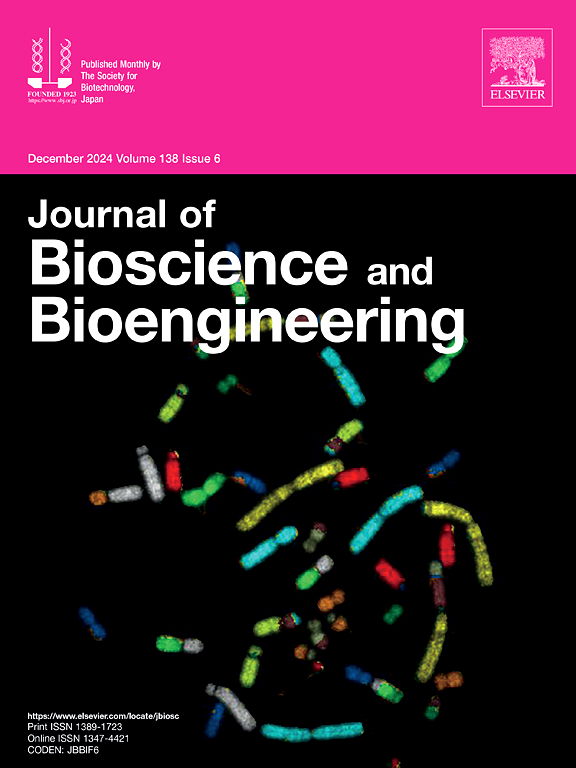一种减缓氧化亚氮排放方法在全尺寸Carrousel反应堆中的应用:碳足迹评估。
IF 2.9
4区 生物学
Q3 BIOTECHNOLOGY & APPLIED MICROBIOLOGY
引用次数: 0
摘要
污水处理厂生物脱氮过程中产生的氧化亚氮(N2O)排放对其总体碳足迹有很大贡献。本研究旨在减少一氧化二氮排放从一个椭圆形的Carrousel生物反应器在一个完整的工厂。进水点和反应器对面的供氧搅拌器交替运行。当进水点的搅拌器悬停,而另一侧的搅拌器运行时,溶解的N2O (DN2O)浓度降低。这种情况与来自潜在完全反硝化细菌的高水平互补DNA (RNA)有关,表明利用进水有机物的N2O还原活性增加。然而,在降低进水有机负荷期间,溶解氧(DO)水平暂时升高;此后,DN2O升高,DO降低。这种波动与高do期氨氧化引起的亚硝酸盐和硝酸盐积累有关。基于这些发现,实施了一种N2O缓解策略:在低有机负荷期间减少氧气供应并增加对面搅拌器的运行时间。这种方法有效地降低了DN2O水平,尽管在降雨事件期间仍存在一定程度的不稳定性。N2O排放因子中位数从0.86%降至0.28%,使工厂年碳足迹减少14%。本研究为全面植物减少N2O提供了有价值的见解,并证明了N2O减少对其碳足迹的巨大影响。本文章由计算机程序翻译,如有差异,请以英文原文为准。

Application of a mitigation method for nitrous oxide emission in a full-scale Carrousel reactor: Carbon footprint assessment
Nitrous oxide (N2O) emissions from biological nitrogen removal processes in sewage treatment plants greatly contribute to their overall carbon footprint. The present study aimed to mitigate N2O emissions from an elliptical Carrousel bioreactor in a full-scale plant. The oxygen supply agitators equipped at the influent point and the opposite side of the reactor was operated alternately. The dissolved N2O (DN2O) concentrations were lowered when the agitator at the influent point was suspended while that on the opposite side was running. This scenario was associated with high levels of complementary DNA (RNA) from potential complete denitrifying bacteria, indicating increased N2O reduction activity utilizing influent organic matter. However, during periods of reduced influent organic load, dissolved oxygen (DO) levels temporarily increased; thereafter, DN2O increased, accompanied by a decrease in DO. This fluctuation was associated with the accumulation of nitrite and nitrate resulting from ammonia oxidation during the high-DO periods. Based on these findings, an N2O mitigation strategy was implemented: reducing the oxygen supply and increasing the running time of the opposite-side agitator during the low-organic-loading periods. This approach effectively decreased the DN2O levels, although a certain degree of instability remained during rainfall events. The median N2O emission factor decreased from 0.86 % to 0.28 %, reducing the annual carbon footprint of the plant by 14 %. This study provides valuable insights into N2O mitigation for full-scale plants and demonstrates the great impact of N2O reduction on their carbon footprint.
求助全文
通过发布文献求助,成功后即可免费获取论文全文。
去求助
来源期刊

Journal of bioscience and bioengineering
生物-生物工程与应用微生物
CiteScore
5.90
自引率
3.60%
发文量
144
审稿时长
51 days
期刊介绍:
The Journal of Bioscience and Bioengineering is a research journal publishing original full-length research papers, reviews, and Letters to the Editor. The Journal is devoted to the advancement and dissemination of knowledge concerning fermentation technology, biochemical engineering, food technology and microbiology.
 求助内容:
求助内容: 应助结果提醒方式:
应助结果提醒方式:


